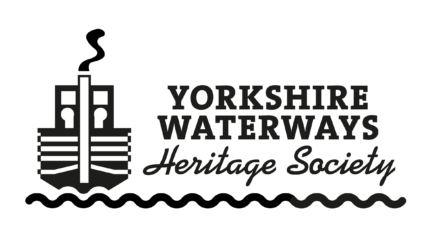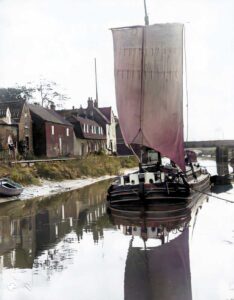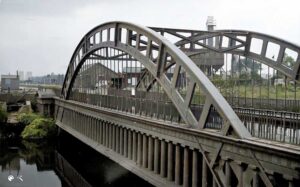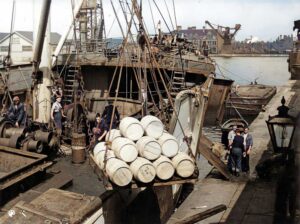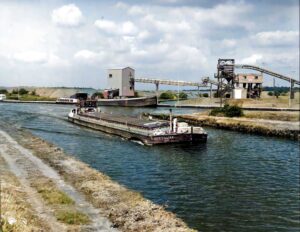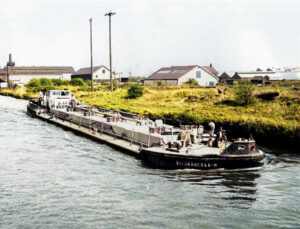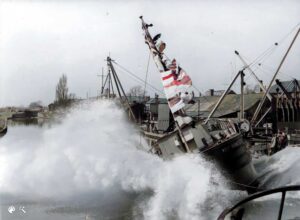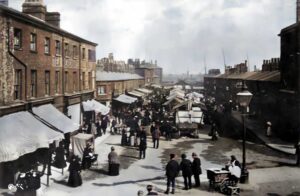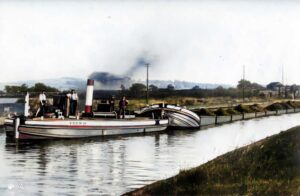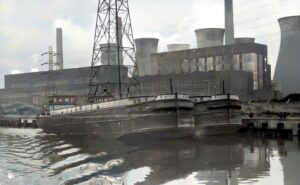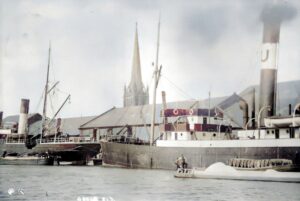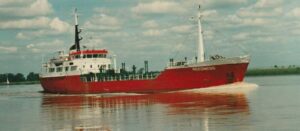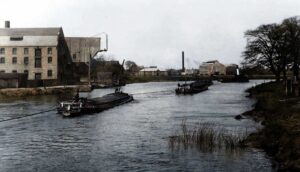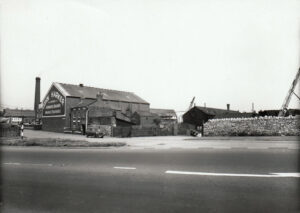Picture Galleries landing page
Picture Galleries
Historic Photographs
from Yorkshire's Waterways
This Society is building a collection of historic images of the people, places and vessels once found on the canals and rivers of Yorkshire. They have been donated by enthusiasts who want to preserve and publish material about the heritage of an industry which once underpinned the industrial success of the county but today has all but disappeared.
Our diverse collection of images relating to Yorkshire’s waterways may be accessed by choosing a topic below and clicking the button:
People and Events
This collection looks at surviving photographs of those who lived and worked on Yorkshire’s waterways. This is not a big collection but it is hoped that it will grow as folk dig those old sepia photographs of their watermen ancestors out of their hiding places and allow us to share them through this website.
Keels and Sloops
Throughout the 19th and early 20th centuries the vessel of choice for Yorkshire’s watermen was the Humber keel or sloop. Built originally in wood but later iron and steel, these cargo vessels carried loads of up to 150 tons between industrial Yorkshire and the ports of Goole and Hull. Powered by sail or towed by tug, horse or man, they not only carried cargoes but also the waterman’s family who would live onboard for the duration of each trip.
Canal Infrastructure and Buildings
There were many examples of how the canal builders and operators coped with the geography of Yorkshire which their canals had to cross. Some examples of locks and bridges survive today while others have succumbed to demolition or even infilling. Industrialists took advantage of the waterways system building their factories and warehouses next to the canals.
Goole Docks
The port of Goole opened for business in 1826 having been built by the Aire and Calder Navigation Company at the point where their new canal meets the River Ouse. Operated today by ABP, it is the largest inland port in the UK. This collection includes photographs of the port infrastructure, the visiting vessels and the cargoes handled there some dating back over 150 years to the days of sail and steam.
Dry Cargo Motor Barges
Towards the end of the 19th century, we start to find that existing vessels and some new keels are being equipped with engines, a trend which continued into the 20th century. These self propelled vessels were no longer totally at the mercy of the wind and currents. As engines developed the size of new vessels increased and we see the wheelhouse become standard, although often with the ability to be collapsed for passing under low bridges.
Motor Tanker Barges
Liquid cargoes had long been carried in barrels and drums but in the 20th century the need arose to carry greater quantities, driven in part by the rapid expansion in the use of the motor car. Petroleum products needed to be taken from refinery to local depots sited by the waterways and this drove a rapid expansion in numbers of specialised tanker barges operated for that purpose.
Boat and Ship Building
Alongside Yorkshire’s waterways there were a significant number of boat and ship builders. The depth of water available for launch constrained the size of the craft built but keels were being built as far inland as Apperley Bridge. Sea going vessels were built at Knottingley, Goole, Selby and Thorne. Shipbuilding has disappeared from the waterways leaving little trace but this photographic collection reminds us of the days when Yorkshire did have an important shipbuilding industry.
Communities along the waterways
Contrary to popular belief, the vast majority of Yorkshire’s watermen did not spend all their time living onboard their vessels with their families. It was the norm to retain a home on land which was visited whenever the opportunity arose. If you earned your living on the waterways it therefore made perfect sense for home to be near a river or canal where you could park your vessel until the next trip.
“Railway on the Water”
Since the mid 19th century coal had been been transported in bulk by canal from Yorkshire’s pits to the port of Goole. Tugs towed trains of empty compartment boats, nicknamed “Tom puddings” or just “pans”, to loading points, staithes, near the pits. Full of coal, they were then towed back to Goole docks where ingenious coal hoists were used to empty the pans into colliers for onward transportation by sea to customers in the UK and Europe.
Coal for Power
Predating the Tom Pudding traffic by nearly half a century, bulk coal was delivered by canal to the gas works which emerged early in the 19th century. Seventy years later saw the first town power station at Halifax in 1891, quickly followed by most other Yorkshire towns. The canal craft servicing these coal hungry works started with conventional keels and barges, later evolving into the pusher tugs with their large capacity compartment boats.
Steam Powered Vessels
Before the application of the internal combustion engine to shipping in the early 20th century, merchant vessels were powered either by sail or used steam engines. The first steam powered vessels, paddle steamers, dated to the late 18th century. With the invention of the screw propeller in the 1830s, steam power would come to dominate vessel propulsion over the next 100 plus years.
Motor Vessels
The use of the internal combustion engine to propel large seagoing merchant vessels started in the early 1900s but it would be many years before coal fired steamships were to disappear with the last being built in the 1960s. This new generation of motor vessels are still with us today and are to be found on the Humber, Ouse and Trent or moored up in the Humber ports of Goole, Hull, Grimsby and Immingham.
Dumb Barges and Lighters
We regard a dumb barge as a waterways vessel which was not self powered. It may once have had sails but those had been removed and the vessel now relied on being towed by tug or horse or manoeuvred by the crew. Lighters were historically unpowered vessels used to transport goods between ship and shore. They were also able to act as floating storage units in a dock. That said, lighters could also be towed to their destination, and latterly powered lighters were being launched.
John Harker Launches, 1949 – 1974
A large collection of over 500 photographs, donated by Ron Gosney, documenting 89 launches from the yard of John Harker Ltd, Knottingley. The photographs not only feature the vessels being launched but also the fanfare that went on around the launch event with groups of VIPs, perhaps a bouquet presentation and sometimes a bottle of champagne being broken against the bow while the vessel was named.
We have split them into five alphabetical groups for your convenience.
Search all galleries
This Society has amassed a significant collection of historic images sorted into the themes shown above. In March 2025 we launched this new search facility to give viewers extra flexibility when trying to find particular images. You are now able to search in the descriptions for every image held across all of our galleries. So if you are looking for a particular place, person or vessel, try entering a name to see what we have.
Image quality
It is important to recognise that we are publishing a collection of photographs which by the time they have found their way into our hands are likely to have been copied multiple times and shared among friends. What may have originally been a high quality print from an exceptionally well taken glass plate negative has become an ill defined, too dark or too light, cropped reproduction as individual collectors have applied their own preferences to the image. This means that the images found on our website may not be of the highest quality but we believe that it is better that they are published as seen to enable historians to see what life was like for their watermen ancestors.
If you recognise a photograph and have a better quality image in your own collection please share it so that we can update the version in our gallery.
Publication permission for copyright images
We acknowledge that copyright images are being shown for which no explicit permission to publish has been given to this Society. Many of the digital images shown had originally been produced with the knowledge and permission of the now defunct Yorkshire Waterways Museum from original photographs deposited there for public display. Following the closure of that organisation in 2019 and the break up of their collection those original photographs have disappeared and have effectively been lost to the public.
Through an incredible stroke of good fortune digital copies of those images were donated to this Society in 2022 allowing our volunteers to finally achieve the wishes of those photographers and collectors who had made the original donations.
If you are the copyright holder and would like to contact the Society please use the form below.
Descriptions
All images held in our galleries are being given descriptions to assist viewers. While we endeavour to ensure that each description is accurate and complete we recognise that mistakes will have been made so you should therefore not rely on our description.
If you can add to the published description, please let us know and we’ll make a correction. You can contact us using the form at the bottom of this page.
Become a Supporter
Since 2023 there has been no charge for membership of the Society. You will be sent our regular email newsletter telling you what's new and coming soon. To register simply fill in the form and click Subscribe today!
Donate
Your help and donations in keeping the society, it's research and website running are much appreciated!
